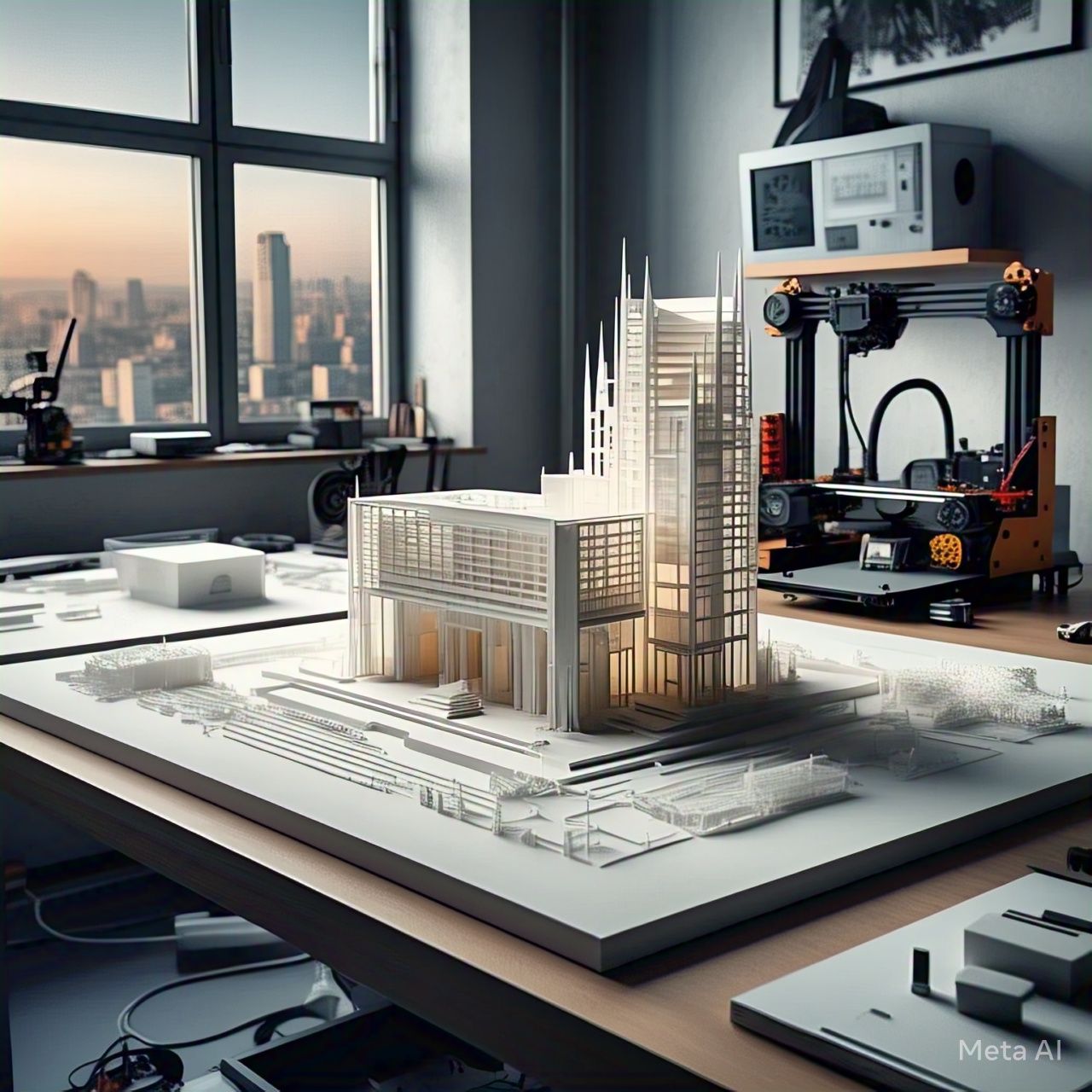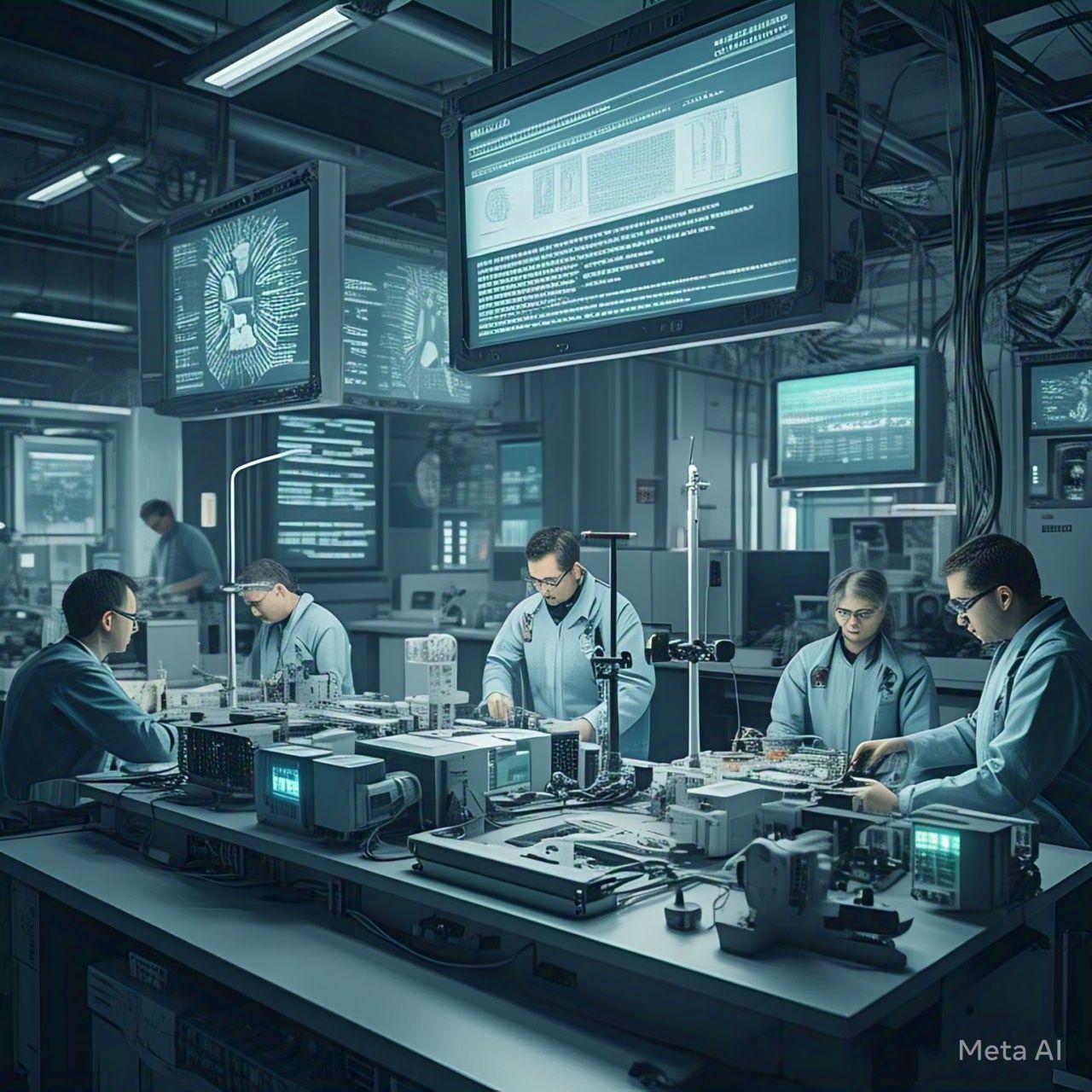Introduction
Architecture is undergoing a radical transformation, thanks to the integration of Artificial Intelligence (AI) and 3D printing. Traditionally, architectural models were labor-intensive and time-consuming to create. However, AI-powered design tools and 3D printing technology have revolutionized this process, enabling architects to develop precise, scalable, and sustainable models in record time. This article explores how AI and 3D printing are redefining architectural modeling and shaping the future of design and construction.
The Role of AI in Architectural Modeling
1. AI-Driven Generative Design
AI enables architects to explore multiple design possibilities through generative design algorithms. By inputting parameters such as materials, environmental conditions, and spatial constraints, AI generates optimized architectural models that balance aesthetics and functionality.
Key Benefits:
- Faster design iterations with AI-generated models.
- Enhanced creativity with unique structural concepts.
- Data-driven designs for optimized spatial planning.
2. Automating Model Creation with AI
AI-powered software automates tedious aspects of architectural modeling, from blueprint generation to structural analysis. Machine learning algorithms analyze past designs, predict construction feasibility, and refine models for efficiency.
Key Benefits:
- Reduced human error in architectural modeling.
- Faster turnaround times for model development.
- Improved collaboration between architects and engineers.
The Impact of 3D Printing on Architectural Models
3. Rapid Prototyping for Architectural Models
3D printing enables architects to create detailed physical models quickly, eliminating the need for manual crafting. This technology translates AI-generated designs into tangible, high-precision models that allow for real-world visualization.
Key Benefits:
- Faster production of physical architectural models.
- Improved accuracy and consistency in designs.
- Cost-effective model production with minimal waste.
4. Customization and Material Efficiency
3D printing allows for high levels of customization, enabling architects to experiment with various materials and structures. AI assists by suggesting the best materials for durability, sustainability, and cost efficiency.
Key Benefits:
- Personalized architectural models tailored to client needs.
- Sustainable use of materials with minimal waste.
- Complex geometries and intricate detailing made possible.
5. Scaling Up: From Models to Full-Scale Construction
AI and 3D printing are not only transforming small-scale architectural models but also paving the way for full-scale 3D-printed buildings. The technology is being used to create homes, offices, and infrastructure with greater speed and efficiency than traditional methods.
Key Benefits:
- Faster construction of large-scale architectural structures.
- Cost savings in labor and material expenses.
- Sustainable, energy-efficient building solutions.
The Future of AI and 3D Printing in Architecture
As AI and 3D printing technologies continue to evolve, architectural design and construction will become even more automated, precise, and sustainable. The fusion of AI-driven generative design with advanced 3D printing techniques is pushing the boundaries of what is possible in architecture. Future developments will focus on further optimizing material use, reducing environmental impact, and enabling mass customization in construction projects.
Conclusion
AI and 3D printing are revolutionizing architectural modeling by enhancing design accuracy, efficiency, and sustainability. These technologies allow architects to create complex, data-driven models faster and more cost-effectively than ever before. As AI continues to refine generative design processes and 3D printing expands its capabilities, the future of architecture will be shaped by innovation, efficiency, and sustainability




